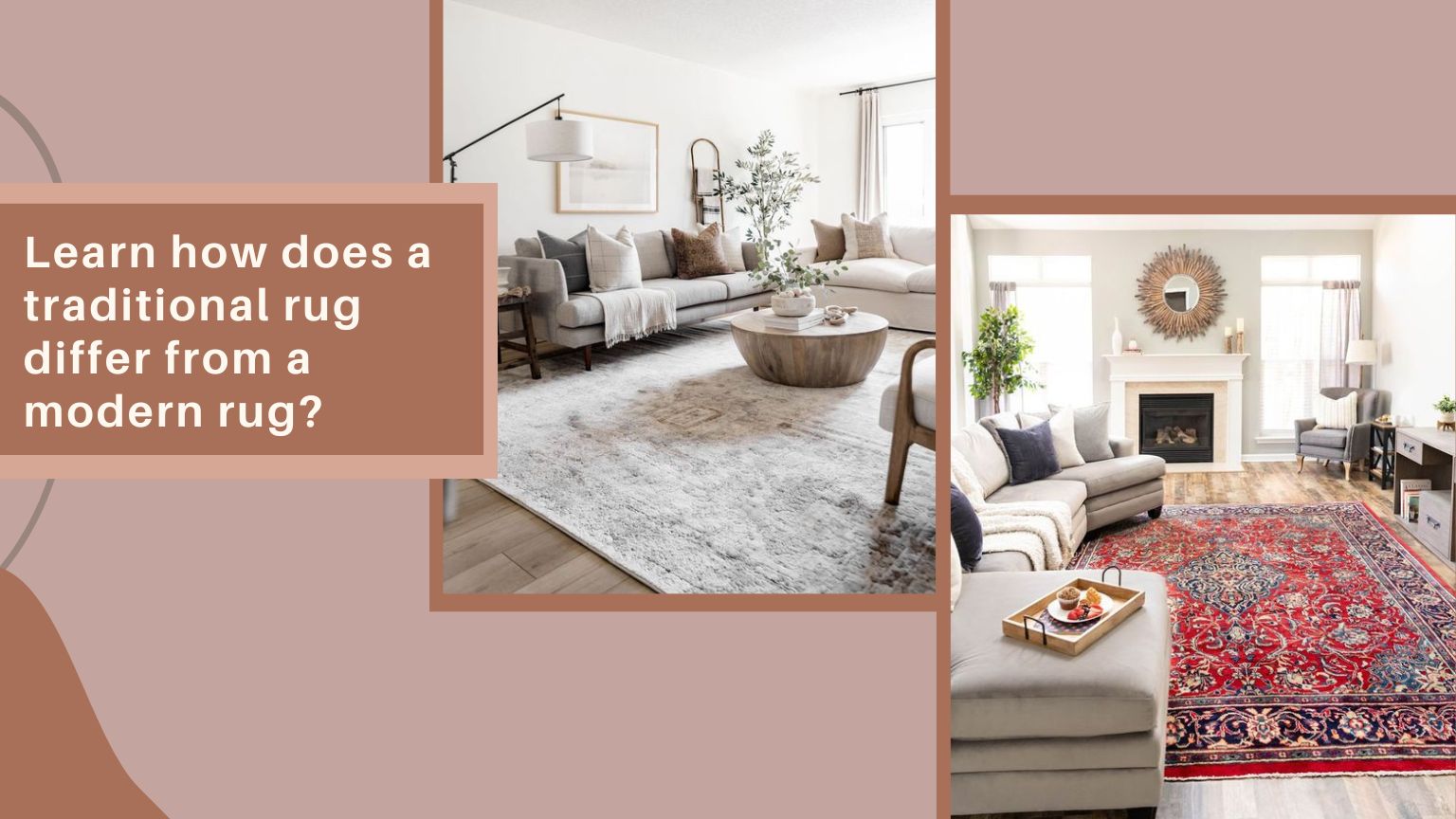Introduction
Furnishing your home is all about personal taste, and large area rugs are the ideal pieces that can really set the tone for any room you place them in, be it in your living room, dining room, or entryways. However, there are myriads of rug styles that include both contemporary as well as traditional rugs. But how would you choose the best one for your home? You want a style that will fit within the context of your home, or you can start with a designer rug and build the ambiance of the room from there.
Traditional hand-knotted rugs are usually the most adored of all categories. Although, throughout history, most people have been using them to furnish living rooms, bedrooms, dining, rooms, and even reception rooms, they tend to make a significant statement even in a modern setting, thereby standing out among all other types of furnishings. As the name suggests, traditional rugs are a reference that comprise a wide range of rugs and carpets that are hand-knotted or handwoven in different regions of the world. When we speak of traditional rugs, we usually refer to the type of design of the rugs as opposed to modern rugs. Nevertheless, when we refer to an area rug by the word ‘traditional’, it naturally involves different elements other than design. For instance, a traditional hand-knotted rug is always handwoven unless it is specified that only the design is traditional.
People have been using traditional rugs for nearly several hundred years. However, they have gone through a consistent process of refining and evolution. Also, since the phrase ‘traditional rugs’ usually refers to the type of design in a hand-knotted rug, apart from the fact that may include various different types of motifs and patterns, a particular element may have been added, modified, or eliminated by different weavers.
In this blog, we, at Rugs By India, have brought to you this guide to help you learn the difference between modern and traditional rugs, and how to choose which is the right option for you.
Traditional Rugs
Traditional rugs are typically inspired by either Persian or Oriental patterns or Victorian and European styles. They are commonly described as intricate and ornate in both colors as well as markings.
Generally, the designs of traditional hand-knotted rugs take the form of floral arrangements, central medallions enhancing octagonal or diamond shapes, or other magnificent intricate patterns synonymous with these eras. With such elegant and stately combinations, the color palette of traditional hand-knotted rugs is usually pre-defined to reflect this.
Imagine deep sage, rich maroon, opulent navy, and warm beige with injections of black ink. These majestic hues are usually used throughout all traditional rug designs, and with lavish patterns, come together to create one of the most luxurious floor coverings available on the market.
Contemporary Rugs or Modern Rugs
Adding a whole new dimension to the rug world with an exotic blend of vibrant hues and abstract design elements are those under the contemporary umbrella. These variations are mainly inspired by modern art and architecture and usually enhance free-form elements. Modern rugs can feature retro patterns as they give a nod to the art deco era where geometric designs and patterns were extremely popular. With this, the color palettes and schemes usually feature bolder combinations and shades, but then again, it varies from style to style.
Designs Of Element In Traditional Hand-Knotted Rugs
Most of the significant designs on traditional oriental rugs are Persian designs that have been adopted by other weavers throughout the world. Nevertheless, Persian rugs have adopted a particular element of designs from other regions for different purposes. For example, in the early 19th century, Persian rugs became a possession that found a new market in Europe and later on in North America. During this period, some Iranian rug weavers took on the policy of accommodating the western fashion taste. They started assimilating some of the western architectural elements in their designs or weaving rugs with French Aubusson resins and including some western floral patterns that came to be known as western floral.
The category of traditional rugs commonly includes Turkish rugs, Persian rugs, Pakistani rugs, Indian rugs, and Afghani rugs, each of these regions comprises different sub-categories like Persian Kerman rugs, Persian Kashan rugs, Persian Heriz rugs, Persian Tabriz rugs, Persian Serapi rugs, Persian Mashad rugs, Persian Isfahan rugs, Persian Naeen rugs, and Indian Jaipur rugs.
Among the famous designs in the category of traditional rugs are sceneries and animal impressions. These patterns and designs have traditional names and have been around for hundreds of years with minor modifications.
Hues In Traditional Rugs
One of the most distinct features of traditional rugs is the use of certain hues and color combinations. In order to make it more defined, some of the colors used in modern rugs or the blend of specific colors are what makes traditional rugs different from modern rugs. The colors used in traditional rugs are somewhat similar to each other and include rusty red, black, navy blue, white, brown, and maroon. Most of these rugs have darker tones except they have been made for a specific purpose.
To Sum It Up!
Now that you know all about traditional hand-knotted rugs, we are certain that you also know by now about how you will choose the right one for your home. Rugs By India offers a wide range of traditional Indian rugs that can add statement and sophistication to your home. So, visit our website today and check out our new range of extravagant traditional rugs.

